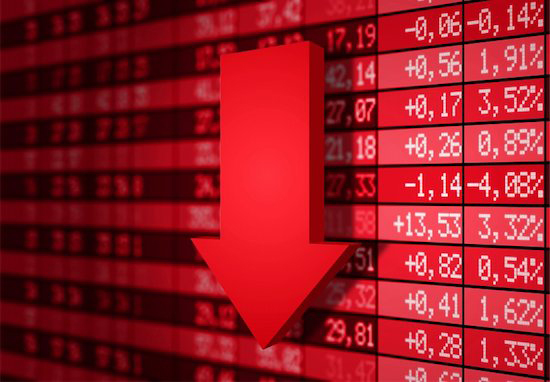Correction Reflection
Time flies when investors are enjoying a bull market. It has been four, mostly blissful years since the last 10 percent correction for stock markets. Back then, the fragile economic recovery was at risk due to a Congressional battle over raising the US debt ceiling limit. This time around, we have plain old anxiety about global economic growth. Although the U.S. economy continues to show improvement, the fear is that a slowdown in the world’s second largest economy – China – not to mention the cooling of once-hot emerging economies like Brazil and Russia, will impact the rest of the world. Considering that Europe and Japan are muddling along and the U.S. is only growing by about 2.5 percent a year, any significant headwind could pose a threat.
Yes, you have heard this story before, but previously, when sluggishness infected China, the government there would waive its magic wand and poof—things would pick up. This time, efforts by Beijing officials to intervene in its stock and currency markets have thus far failed to quell the slowdown fears.
As a result of the China deceleration story, commodities have also came under renewed pressure. After bouncing up to $60 per barrel earlier this year, fear that Chinese demand would wane, as U.S. and OPEC’s production remains high, culminated in an 8-week rout that left NY oil futures at $40.45 per barrel, the lowest price since March 2009. Crude is now 34 percent off its 2015 peak and down a staggering 62 percent from a year ago.
The sell-off in oil has pushed down the big energy companies in the Dow and S&P 500, but that’s not the only industry under pressure. Apple stock is down by more than 20 percent from its May high; 328 stocks within the S&P 500 are in correction territory; and about a quarter of them are down more than 20 percent. So, even though the S&P 500 has not yet dropped by 10 percent from its recent peak, two-thirds of its components are suffering mightily.
OK, so now you know what’s behind the market drubbing, but it is important to note that corrections are a normal part of market action. According to Capital Research and Management, through last year, 10 percent corrections occur about every year, so we have been long overdue for one. (20 percent bear markets occur about every 3 ½ years, so we are also due for one of those—the last one ended in March 2009.)
If you forgot about the downside risk of owning stocks, shame on you—there’s no crying in baseball or investing! Over the last 15 years, markets have shown that wild swings are part of being in the game. Hopefully, most investors learned the beauty of a diversified portfolio, one that can help avoid a cycle of buying high/selling low. Additionally, one of the big lessons of the financial crisis/bear market/Great Recession is that everyone should strive to keep at least six months in an emergency reserve fund-twelve months is preferable. If a big expense is coming up, the money necessary to cover it should never be at risk in the stock market.
MARKETS:
- DJIA: 16,459 down 5.8% on week, down 7.7% YTD (down 10.1% from peak)
- S&P 500: 1,970 down 5.8% on week, down 4.3% YTD (down 7.5% from peak)
- NASDAQ: 4,706 down 6.8% on week, down 0.6% YTD (down 9.8% from peak)
- Russell 2000: 1156, down 4.6% on week, down 4% YTD (down 10.5% from peak)
- 10-Year Treasury yield: 2.05% (from 2.2% a week ago)
- October Crude: $40.45, down 6.2% on week
- October Gold: $1,159.60, up 4.2% on week
- AAA Nat'l avg. for gallon of reg. gas: $2.61 (from $2.67 wk ago, $3.44 a year ago)
THE WEEK AHEAD: The market noise has left many wondering if the Federal Reserve might delay its lift off for rate increases. Before the sell-off, consensus was forming around a quarter point bump at the September meeting, but there could be more clues about the Fed’s thinking at the Jackson Hole symposium economic issues facing the U.S. and world economies occurs. The annual event, sponsored by the Kansas City Fed, has often been a place where central bankers introduce new policies, but Janet Yellen has decided not to participate, the first Fed chair to skip the Western sojourn in some time.
Mon 8/24:
8:30 Chicago Fed National Activity Index
Tues 8/25:
9:00 S&P Case-Shiller Home Price Index
10:00 New Home Sales
10:00 Consumer Confidence
Weds 8/26:
8:30 Durable Goods Orders
Thurs 8/27:
Federal Reserve Jackson Hole Symposium begins
8:30 GDP (Q2 2nd reading, expected to be revised from +2.3% to +3.2%)
8:30 Corporate Profits
10:00 Pending Home Sales Index
11:00 Kansas City Fed Manufacturing Index
Fri 8/28:
Federal Reserve Jackson Hole Symposium
8:30 Personal Income and Outlays
10:00 Consumer Sentiment

